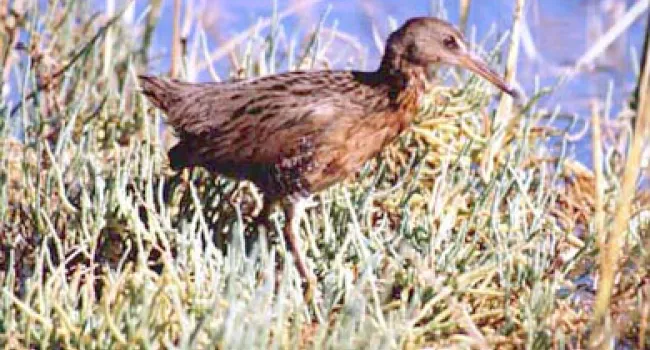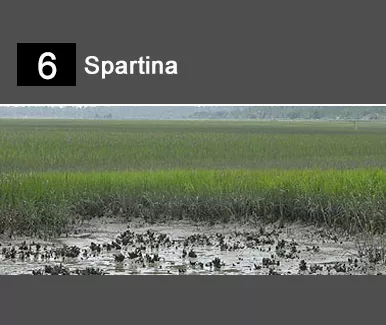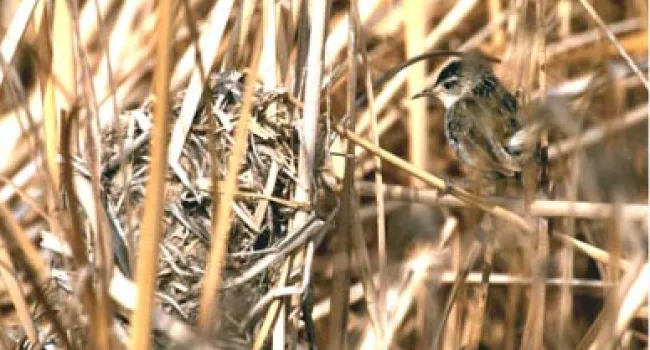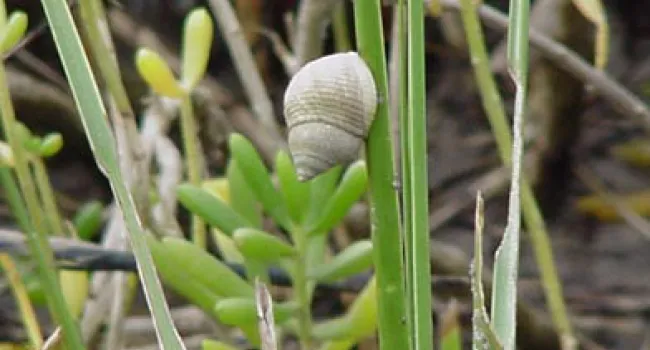
Photo
Clapper rails live their whole lives in the salt marsh. They even nest in clumps of Spartina just above the water. The downy black young are hard to see against the dark marsh mud. Both the adults and...
Spartina, or smooth cordgrass, is the dominant plant of the salt marsh because it is adapted to the conditions there. It can live even though it is flooded by salt water and then dried out when the tide ebbs. Salt marshes are among the most productive ecosystems on Earth. They produce twice as much plant material as the best agricultural system on the same amount of land.
Spartina grows tallest along the creek banks (up to 7 feet) and shortest in the high marsh (1 foot or less). The creek-bank plants are flooded the longest, and so have little change in salinity and temperature. They also receive the nutrients first, which sweep up out of the creeks as they flood the marsh on a rising tide. Both of these effects result in taller, healthier plants. Spartina grows tall during the summer, flowers in the fall, then dies back in the winter.
Dead Spartina is a rich food source, forming extensive mats of detritus that are then broken down by a variety of animals, such as mud snails. Only the periwinkle lives directly on the Spartina. You must look closely to see the periwinkles on the stems.
The Spartina is so tall and thick that it is often hard to see animals in the marsh. The clapper rail is a bird that is one of the marsh’s most secretive residents. You will probably never see one, but you can often hear them. They are called clapper rails because, if you clap your hands, they are supposed to answer with their call. You must also be alert in order to see a marsh wren or its nest.

Photo
Clapper rails live their whole lives in the salt marsh. They even nest in clumps of Spartina just above the water. The downy black young are hard to see against the dark marsh mud. Both the adults and...
Photo
The wrens build their nests in the tips of living Spartina. The nests are made out of dead Spartina. They are not open, but are covered, so the nest looks like a ball of dead grass. There is a hole on...
Photo
At low tide, the periwinkles crawl down to the base of the stem, where algae grow best, and graze the algae off the stems. When the tide rises, however, the periwinkles crawl up the stems. Why don't...